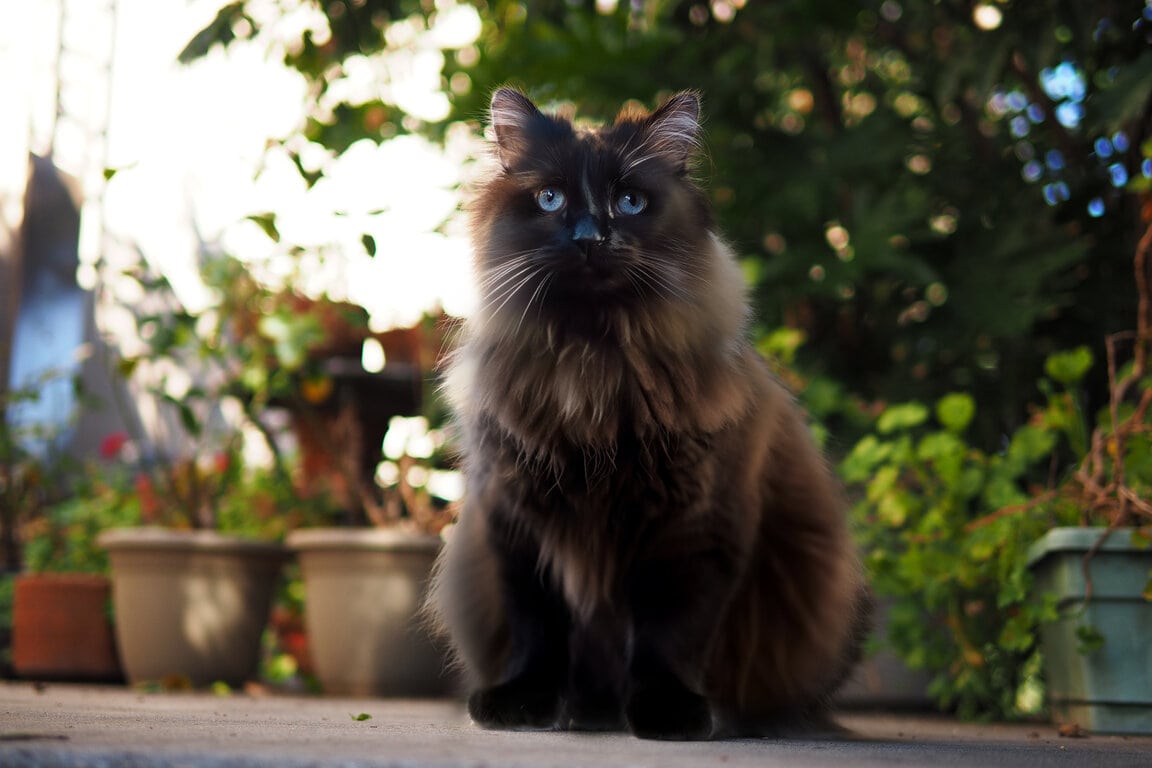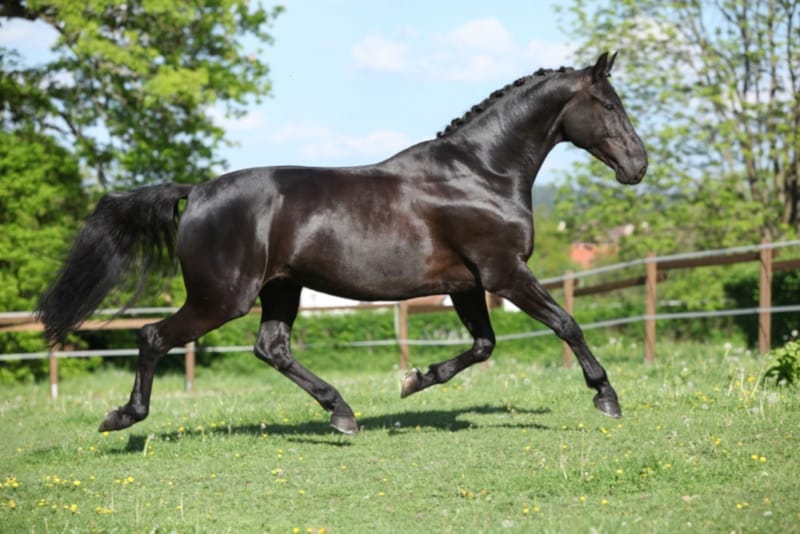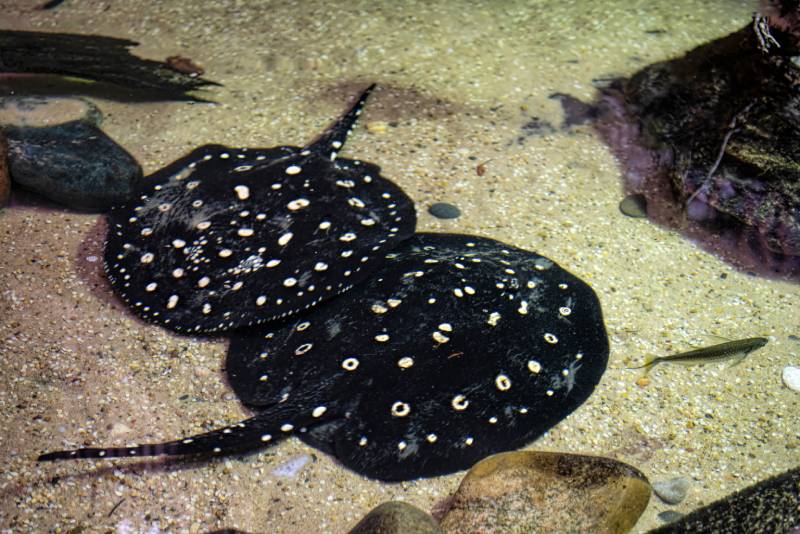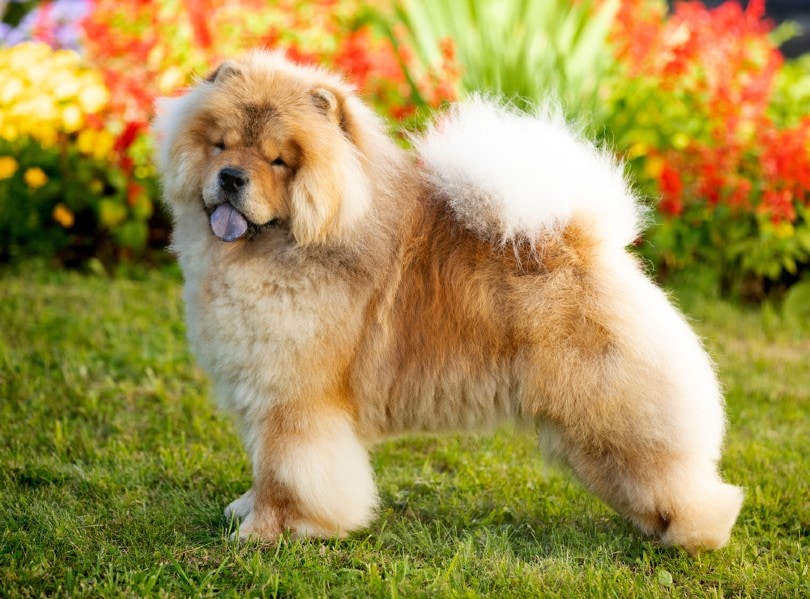Click to Skip Ahead
Ragdoll cats are known for their soft fur and gentle nature. They have famously beautiful coats in a wide range of colors, but you might be surprised to learn that they can also come in black! Black Ragdolls have been around for a long time, despite not being allowed to be shown at any major competitions. So, why is that? What’s the history of this darkly fluffy feline? Read on to find out!
Breed Overview
Height:
9–12 inches
Weight:
15–20 pounds
Lifespan:
12–15 years
Colors:
Black, black smoke
Suitable for:
Families with children, elderly, those looking for a laidback large cat
Temperament:
Friendly, gentle, relaxed, sweet
The black Ragdoll is a bit of an enigma. The Ragdoll show criteria or breed standard across all cat-fancying clubs are strict on color and patterning, and black is not included. Yet the black Ragdoll has been present since the breed’s inception, and one of the founders of the breed had a black coat!
One of the first Ragdolls, Blackie, was a black male that sired one of the first litters of the breed. He was bred in Riverside, California, by Ann Baker, the person credited with creating the breed.
However, the way that Ann structured her breeding programs and how closely guarded she kept her cats didn’t sit right with the next generation of breeders. That is where the controversy of the black Ragdoll began.
Black Ragdoll Cat Characteristics

The Earliest Records of Black Ragdoll Cats in History
The first Ragdoll cats ever to be bred belonged to Ann Baker. In 1963, Ann had begun breeding longhaired cats with sweet natures. The litter of kittens produced had a “floppy” and relaxed stance when picked up, which became their namesake!1
The progenitors of modern Ragdolls were born from this litter. One of these, Blackie, was an entirely black cat that went on to sire litters that were given the Ragdoll name. So, black Ragdolls have been around since the start, and they still persevere today among private breeders who adore their smoky coats.
However, due to differences in breeding and managing practices among Ann’s International Ragdoll Cat Association club members, a pair of breeders, Denny and Laura Dayton, soon splintered off to do the work on their own. They have been credited with developing the Ragdoll breed as we know them today, which (in all official documentation) does not include the color black.2
A breeding pair of Ragdolls from California was shipped to the U.K. sometime in the 1960s. People fell in love with them, and eight more Ragdolls soon followed them across the sea. This was the start of the breed in the United Kingdom, and they were introduced to other European countries in the 1980s.
How Black Ragdoll Cats Gained Popularity
The black Ragdoll cat’s popularity likely grew simply because it was controversial. Given how strict Ann Baker’s Ragdoll “franchise” was, there was already significant discourse among breeders.
When the first breeding pairs were shipped to the U.K. in the early 1980s, they made the cover of Cats magazine. This increased the popularity of the emerging breed, and official registration of the Ragdoll breed with the Cat Fanciers Association (CFA) occurred in 1993. Ragdolls were then shown at the international show in Tennessee that year.
However, there would not be any black Ragdolls. One of the founders, Denny Dayton, said, “I will not let the minks, sepias, or solid variants be accepted into our blue-eyed and pointed breed!”3 However, this has not dissuaded new discoverers and lovers of the breed, and black Ragdolls are sold whenever they appear in litters around the world.
Formal Recognition of Black Ragdoll Cats
Full black (or “solid”) colored Ragdolls can be registered with several cat-fancying organizations around the world, including The International Cat Association (TICA). However, these cats cannot be shown; solid colors like black are not part of the breed standard. Along with having the right coat color, all shown Ragdolls must have blue eyes, and many (if not all) black Ragdolls don’t have this characteristic. But they often have green, amber, or even bi-colored eyes!
The Ragdoll was first recognized formally by:
- The National Cat Fanciers Association in 1966
- TICA in 1979
- CFA in 1993
- The American Cat Fanciers Association in 1981

Top 5 Unique Facts About Black Ragdoll Cats
1. The Black Ragdoll Is One of the Largest Breeds
In the world of cats, the Ragdoll is one of the largest. They weigh over 15 pounds, and some clubs (like the CFA) even allow male Ragdolls up to 20 lbs. That’s heavier than some Maine Coons!
2. They Don’t Reach Full Maturity Until 4 Years Old
Due to their size and slow maturity, black Ragdolls won’t reach full maturity until they’re 4 years old. They need time to grow in all the extra fluff they have around their necks (called a ruff) and legs (called pantaloons). They even behave like kittens until they turn 3.
3. They Don’t Have a Lengthy Lifespan
As sad as it is, black Ragdolls don’t live as long as many other breeds of cats. According to a study conducted in Sweden, most (63%) of Ragdolls won’t reach their 10th birthday. However, plenty of Ragdoll cats have lived a lot longer!
4. They Are Known for Being “Dog-Like”
Part of the black Ragdoll’s unique charm (other than their tendency to go limp when carried) is their dog-like mannerisms. These cats often follow their owners around from room to room, happily play and sleep in bed with them, and can be taught how to play fetch.
5. A Black Ragdoll Was One of the First of Their Kind
Blackie, a black Ragdoll, was one of the first ever bred. He sired a line that has continued to create black Ragdolls to this day, and he was around for the breed’s first proper introductions to cat-fancying organizations back in 1963. Some clubs are trying to bring solid colors (such as black) back into the breed, as they love their uniqueness and charm.

Does a Black Ragdoll Cat Make a Good Pet?
Black Ragdolls make great pets for those who want an easy-going, loving, devoted, and sometimes clingy companion. Despite their thick coats, these cats are relatively low maintenance and calm. If well-socialized, the black Ragdoll can be left at home while owners go out to work. However, your cat will still need plenty of entertainment while you’re away, even though they’re often lazy! They also get along well with other pets, provided they are allowed their space.
The black Ragdoll doesn’t have many health problems, but hypertrophic cardiomyopathy should be one to watch out for. Lastly, you won’t find a more gentle playmate for children; black Ragdolls are known to be placid and patient. Just remember to supervise children with cats at all times, and wait until very young children can respectfully handle them before letting them play together!
To learn more about Black Ragdoll health and care, we recommend speaking to a veterinarian.

Conclusion
Black Ragdolls are a rarity in the Ragdoll world. They were there when the breed found their footing in California, but the standard now calls for specific colors and patterns only, which doesn’t include black coats. Black Ragdolls have all the charm and traits that their light-furred siblings have, including the signature “floppiness” when picked up. All in all, the resurgence of black Ragdolls into the mainstream is on the horizon, with many breeders seeing the possibilities in these delightfully dark cats.
See Also:
Featured Image Credit: Light Hound Pictures, Shutterstock













One Response
It’s fascinating to delve into the history and genetics of black Ragdoll cats, especially considering how closely tied they are to the breed’s early development. While the breed standard does not officially recognize black as a valid color, it’s clear that black Ragdolls have a unique place in the breed’s legacy. The story of Blackie, one of the first Ragdolls, truly highlights the breed’s complex origins.
It’s worth noting, however, that while black-coated cats with Ragdoll-like traits do exist, they may not meet the genetic standards required for official recognition. As my blog explores, many of these cats may be “Ragdoll-like” rather than purebred, and their coats can be just as striking as their more-traditional counterparts.
One thing that’s always true about Ragdolls, regardless of their coat color, is their temperament. Black Ragdoll-like cats often have the same loving, laid-back nature that makes them such great companions. Have you had the chance to interact with a black Ragdoll or similar mix? I’d love to hear more personal experiences!